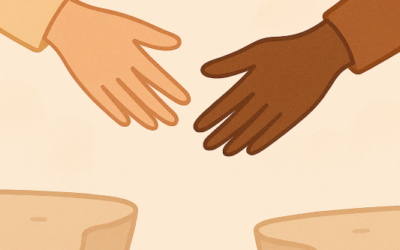“The Conversation
That Changed Everything”
It started in line for coffee.
Not at a conference, not at a networking event — just the usual morning scramble at the corner café.
Mara, a junior designer still finding her voice in the firm, noticed the man ahead of her studying paint samples. “Those look suspiciously like Sherwin-Williams fan decks,” she joked. He smiled. “Caught me. I’m a facilities manager — we’re repainting two office towers downtown.”
Ten minutes later, their cappuccinos were getting cold as they swapped notes about color psychology, lighting, and how hard it is to find decent painters who clean up after themselves. A week later, she sent him a quick thank-you note — just friendly, no agenda.
Three months after that, his company hired her firm for a complete redesign of both lobbies.
That’s how small talk works when you stay open to possibility.
We tend to dismiss casual chatter as filler, the stuff between “real” conversations. But in truth, small talk is how trust begins. It’s the handshake before the contract, the smile before the meeting, the shared laugh that reminds people you’re human — not just another LinkedIn headshot.
The most lasting impressions rarely start with rehearsed elevator pitches. They start with simple moments of connection: commenting on someone’s book choice, complimenting their shoes, or asking how they like the conference coffee (hint: no one ever does).
Opportunity hides in the ordinary — in every hallway hello, elevator ride, or pre-meeting chat. You never know which one might become a turning point, a friendship, or a future collaboration.
So the next time you’re tempted to scroll instead of speak, remember: rapport starts small.
Because small talk isn’t small at all. It’s where big things begin
Resonance
Image created by Google AI. Influence isn’t volume—it’s the resonance In a world that often equates volume with impact, it's easy to fall into the trap of believing that the loudest voice wins. But true influence isn't about decibels; it's about resonance....
Surroundings
: Leadership doesn’t live in a vacuum—it’s affected by what surrounds you.
Ask
Make Bold Requests (Even If It Scares You)
Speak Vision
If all you communicate is “what to do,” people will leave.
Hustle
Hustle isn’t the same as progress.
Influence
You can’t demand influence—you earn it









This was so refreshing to read. Casual, authentic conversations can plant a seed for the future. I love it.
This was a great story and an important reminder how simple connection without an agenda can have big impact.